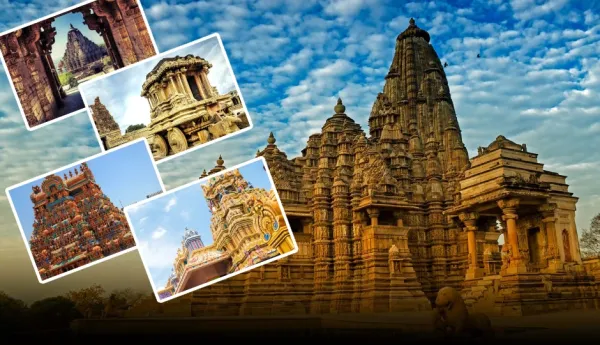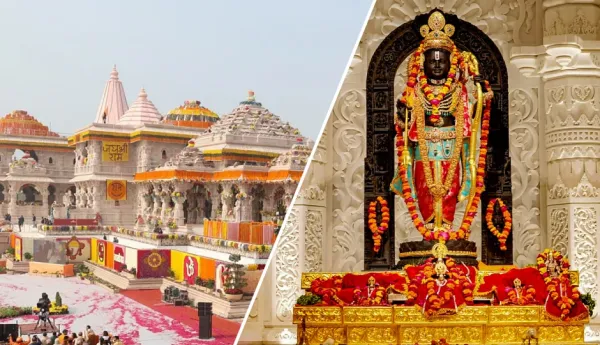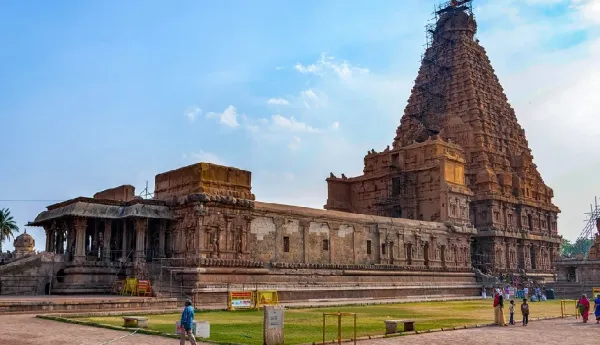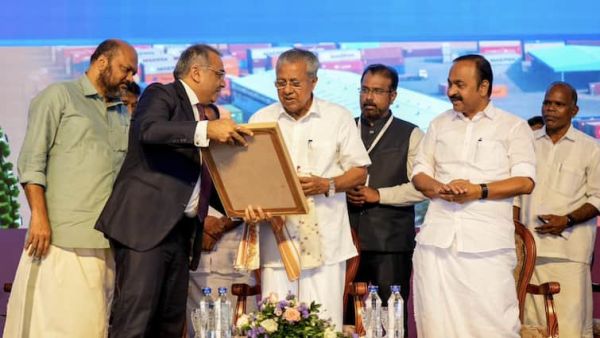

India, one of the world’s oldest civilizations, is a land steeped in history, brimming with countless beliefs, traditions, and legends rooted in its diverse religions. It proudly stands as the birthplace of four great faiths—Hinduism, Jainism, Buddhism, and Sikhism—each leaving an indelible mark on its cultural fabric. Here, people of different religions have lived together in harmony and brotherhood for centuries.
Hinduism, regarded as the world’s oldest religion, has no single founder. Instead, it evolved over time as a fusion of various traditions. Ancient scriptures and scholars describe it as more than just a religion—it is a way of life, with no definitive beginning or end.
For Hindus, the sacred dwelling of the Almighty on earth is the Mandir (temple). Across India, you’ll find magnificent temples—each with its own history, legend, and architectural grandeur. In ancient times, Indian rulers often patronized artisans and sculptors, commissioning extraordinary temples as masterpieces of devotion and craftsmanship.
Here are some of the most renowned and awe-inspiring temples of India.

# Ram Mandir, Ayodhya
Dedicated to Lord Ram and located at his birthplace, the Ram Mandir in Ayodhya is one of the most significant Hindu temples in modern history. The foundation stone was laid on August 5, 2020, by Prime Minister Narendra Modi. The sanctum sanctorum and the first floor were completed in January 2024, with the consecration of Shri Ram’s idol in his child form on January 22, 2024. Though still under construction, the temple has already become a major pilgrimage site, with the entire complex expected to be completed by December 2025.
# Badrinath Temple, Uttarakhand
Nestled along the Alaknanda River in Chamoli district, Badrinath is one of Hinduism’s Char Dham pilgrimage sites and part of the Chota Char Dham circuit. This sacred shrine, dedicated to Lord Vishnu, is also one of the 108 Divya Desams mentioned in Tamil saint literature from the 6th to 9th centuries.
Accessible only from April to November due to harsh winter weather, the temple celebrates notable festivals such as:
Mata Murti Ka Mela (September) – Honoring Lord Badrinath’s mother.
Badri-Kedar Festival (June) – An eight-day celebration shared with Kedarnath, showcasing the traditions of Uttarakhand.
# Sun Temple, Odisha
Located in Konark, Puri district, this 13th-century architectural marvel is dedicated to Surya, the Sun God. Shaped like a colossal chariot drawn by seven horses, the temple was commissioned by King Narasimhadeva.
According to legend, Lord Krishna’s son Samba was cursed with leprosy and prayed to Surya for twelve years. Moved by his devotion, Surya cured him, and Samba built the temple in gratitude. Rabindranath Tagore famously said of this masterpiece: “Here the language of stone surpasses the language of man.”

# Brihadeeswara Temple, Tamil Nadu
Standing proudly in Thanjavur, this grand 11th-century temple—also called Peruvudaiyar Kovil—was built by the Chola emperor Raja Raja Chola I. Dedicated to Lord Shiva, it exemplifies Chola artistry and Vaastu Shastra principles. Made entirely of granite, this UNESCO World Heritage Site is remarkable for casting no shadow at noon.
# Somnath Temple, Gujarat
One of India’s oldest pilgrimage centers, Somnath finds mention in the Shiv Purana, Skanda Purana, and Shreemad Bhagwat Gita. Its name means “Protector of the Moon God.”
Legend says Soma, the Moon God, was cursed to fade away by his father-in-law. Lord Shiva restored his radiance, and in gratitude, Soma built this temple. It is one of the twelve sacred jyotirlingas. Located in Prabhas Kshetra, where Lord Krishna is believed to have left his mortal body, the temple complex also features a museum, Junagadh Gate, a beach, and a sound-and-light show.
# Khatushyam Baba Temple, Rajasthan
Located in Sikar district, this revered shrine is dedicated to Barbarik, a warrior who offered his head to Shri Krishna during the Kurukshetra War as Guru Dakshina. Blessed by Krishna to be worshipped in Kaliyuga as “Shyam,” his head—enshrined as a Shaligram idol—draws thousands of devotees who believe in his wish-fulfilling powers.
# Kedarnath Temple, Uttarakhand
Perched at 3,583 meters in the Garhwal Himalayas, Kedarnath is one of Hinduism’s holiest shrines. Believed to have been built by the Pandavas to atone for their sins, it was later restored by Adi Shankaracharya in the 8th century. Part of the Chota Char Dham, the temple requires a 14 km trek through rugged terrain.
Closed during winter due to extreme weather, the idol of Lord Shiva is moved to Ukhimath during the snowbound months. Surrounded by glaciers and snow-covered peaks, Kedarnath offers both spiritual peace and breathtaking beauty.
-
Kerala CM Vijayan Lays Foundation For Rs 600 Crore Adani Logistics Park In Kochi, To Create 1,500 Jobs

-
Ed Sheeran Ditches $270K Aston Martin After Puddle Mishap, Calls It His ‘Worst Purchase’

-
NorthEast United FC Vs Diamond Harbour FC, Durand Cup 2025 Final, Live Updates: The Championship Match Gets Underway At Salt Lake Stadium In Kolkata

-
Who Is Mehtab Singh? Mohun Bagan Completes Defender's Signing For Undisclosed Fee From Mumbai FC

-
NorthEast United vs Diamond Harbour FC Durand Cup 2025 Final Preview: Can Highlanders Retain Title Or Get Slayed By Debutants?
